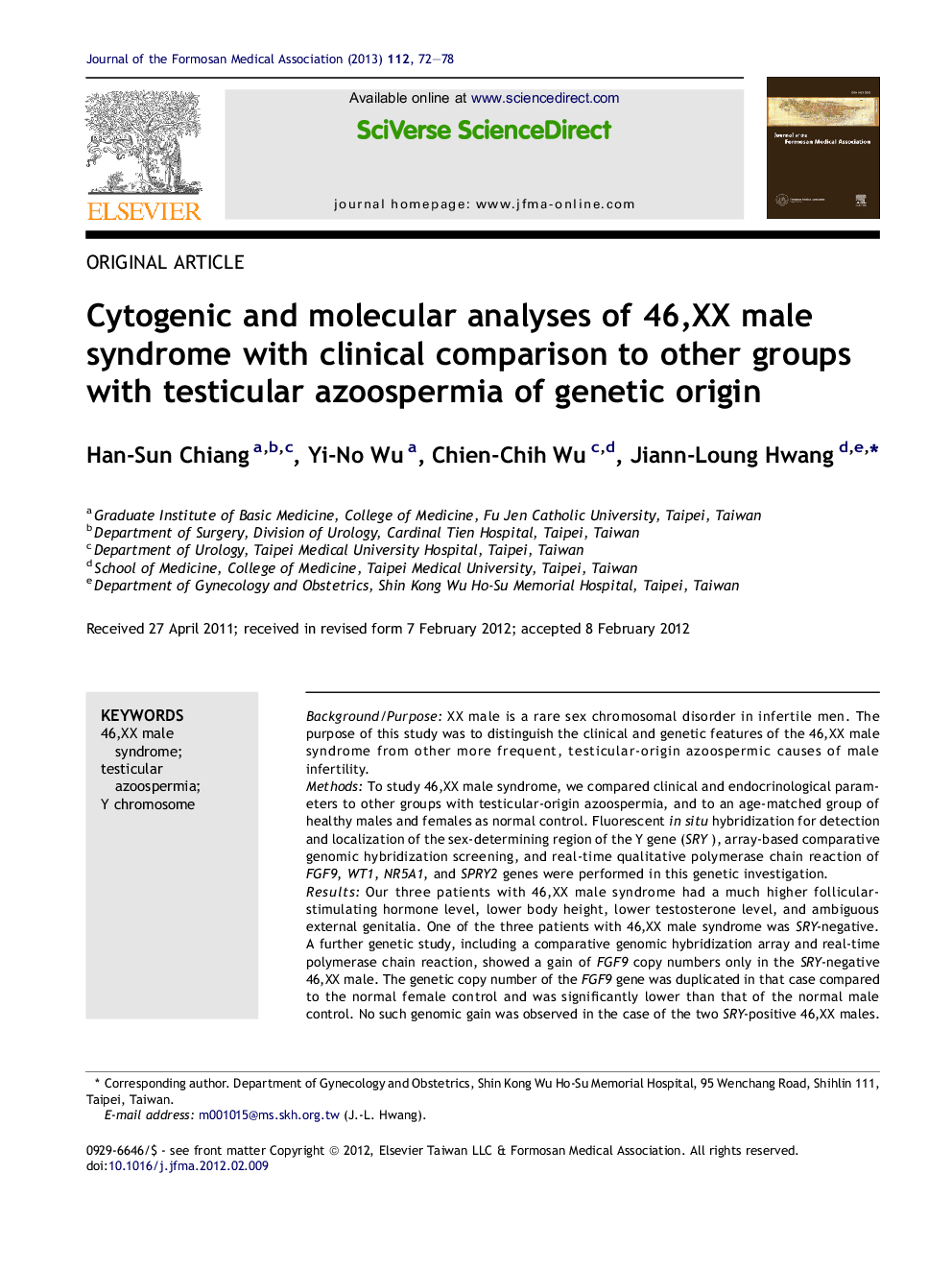| Article ID | Journal | Published Year | Pages | File Type |
|---|---|---|---|---|
| 3478880 | Journal of the Formosan Medical Association | 2013 | 7 Pages |
Background/PurposeXX male is a rare sex chromosomal disorder in infertile men. The purpose of this study was to distinguish the clinical and genetic features of the 46,XX male syndrome from other more frequent, testicular-origin azoospermic causes of male infertility.MethodsTo study 46,XX male syndrome, we compared clinical and endocrinological parameters to other groups with testicular-origin azoospermia, and to an age-matched group of healthy males and females as normal control. Fluorescent in situ hybridization for detection and localization of the sex-determining region of the Y gene (SRY), array-based comparative genomic hybridization screening, and real-time qualitative polymerase chain reaction of FGF9, WT1, NR5A1, and SPRY2 genes were performed in this genetic investigation.ResultsOur three patients with 46,XX male syndrome had a much higher follicular-stimulating hormone level, lower body height, lower testosterone level, and ambiguous external genitalia. One of the three patients with 46,XX male syndrome was SRY-negative. A further genetic study, including a comparative genomic hybridization array and real-time polymerase chain reaction, showed a gain of FGF9 copy numbers only in the SRY-negative 46,XX male. The genetic copy number of the FGF9 gene was duplicated in that case compared to the normal female control and was significantly lower than that of the normal male control. No such genomic gain was observed in the case of the two SRY-positive 46,XX males.ConclusionSimilar to clinical manifestations of 46,XX male syndrome, genetic evidence in this study suggests that FGF9 may contribute to sex reversal, but additional confirmation with more cases is still needed.
